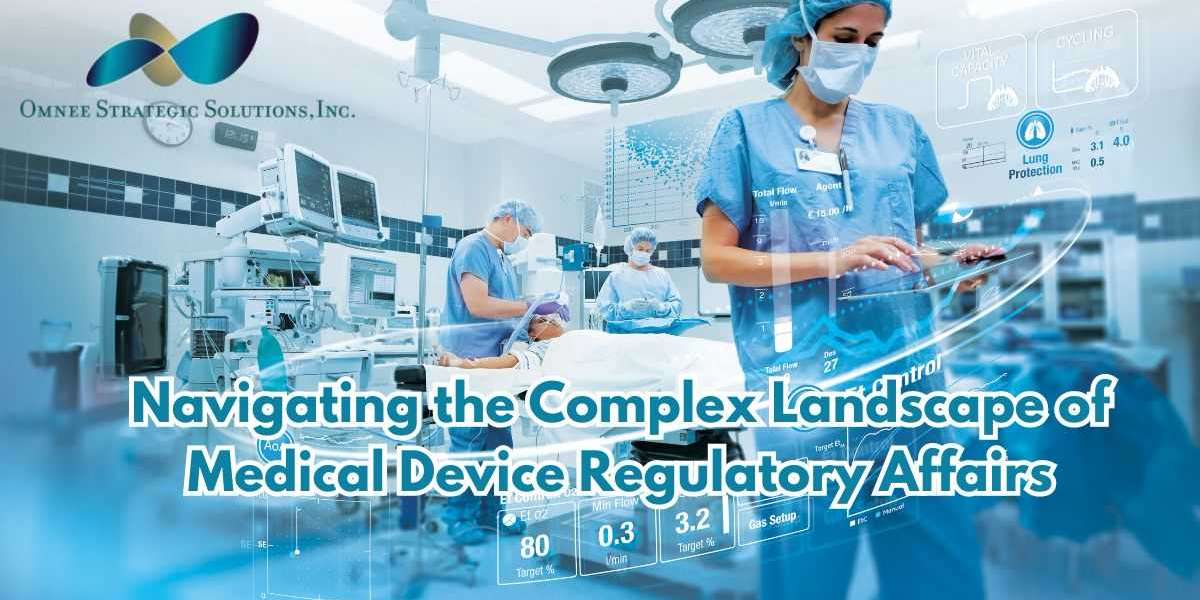Introduction
The medical device industry plays a crucial role in healthcare, providing essential tools for diagnosis, treatment, and monitoring. However, before these devices can reach the market, they must undergo rigorous scrutiny to ensure safety, effectiveness, and compliance with regulatory standards. This is where Medical Device Regulatory Affairs comes into play, serving as the critical function that bridges the gap between innovative medical technologies and regulatory bodies worldwide.
In this blog, we will explore the key aspects of Medical Device Regulatory Affairs, covering its importance, the regulatory framework, and the challenges involved in getting a medical device approved and compliant with international standards.
What is Medical Device Regulatory Affairs?
Medical Device Regulatory Affairs refers to the set of processes and activities involved in ensuring that medical devices meet all regulatory requirements set by governing bodies. This field encompasses the entire lifecycle of a medical device, from product development and pre-market approval to post-market surveillance and compliance with ongoing regulatory updates. Regulatory professionals work closely with engineers, scientists, manufacturers, and legal teams to navigate the often complex regulations imposed by different regions and countries.
Importance of Regulatory Affairs in Medical Devices
The role of regulatory affairs in the medical device industry cannot be understated. Here’s why it is crucial:
Patient Safety: The primary objective of Medical Device Regulatory Affairs is to ensure that devices entering the market are safe for patient use. Regulatory bodies, such as the FDA (Food and Drug Administration) in the United States and the European Medicines Agency (EMA) in the European Union, have stringent safety standards that must be met before a device can be used in clinical settings.
Market Access: Without the proper regulatory approvals, companies cannot market or sell their medical devices. Regulatory affairs ensure that products meet the necessary standards to gain market access. This includes obtaining the necessary certifications like CE Marking in Europe or FDA clearance in the U.S.
Risk Management: Medical devices often carry inherent risks due to their use in critical healthcare scenarios. Regulatory affairs professionals ensure that all potential risks are identified, mitigated, and disclosed through risk assessments and clinical evaluations.
Regulatory Compliance: Compliance is an ongoing process, not just a one-time approval. Medical Device Regulatory Affairs ensures that devices remain compliant with regulatory changes, new standards, and updates to regulations such as the European Union Medical Device Regulation (EU MDR) and In Vitro Diagnostic Regulation (IVDR).
Key Regulatory Bodies and Standards
Understanding the various regulatory frameworks across the globe is crucial for companies developing medical devices. Some of the most important regulatory bodies and standards include:
FDA (United States): The FDA oversees the approval and regulation of medical devices through classifications based on risk: Class I, II, and III. Each class has its own set of regulatory requirements, with Class III being the most rigorous.
European Medicines Agency (EMA): In the European Union, the EMA regulates medical devices under the EU MDR and IVDR. Manufacturers must obtain CE Marking to demonstrate that their products comply with EU safety and performance requirements.
Health Canada: Canada’s medical device regulations are governed by Health Canada, which classifies devices into four categories, similar to the FDA’s risk-based classification system.
ISO Standards: ISO 13485 is a globally recognized standard for quality management systems in the medical device industry. Compliance with ISO 13485 is essential for companies seeking to market their devices internationally.
Japan Pharmaceuticals and Medical Devices Agency (PMDA): Japan’s PMDA plays a significant role in ensuring the safety, efficacy, and quality of medical devices. The approval process involves stringent testing and adherence to local standards.
The Regulatory Approval Process
The regulatory approval process for medical devices is comprehensive, requiring companies to follow a series of steps to ensure that their products meet the safety and performance criteria set by the relevant regulatory bodies. The process generally involves:
Pre-Market Evaluation: During this phase, the device undergoes various tests to prove its safety and efficacy. For high-risk devices, clinical trials may be required. Regulatory professionals must prepare detailed submissions, including technical documentation and risk assessments, to demonstrate compliance with regulatory requirements.
Clinical Trials: For higher-risk devices, regulatory bodies may require clinical trials to validate their safety and performance. Regulatory professionals are responsible for designing, managing, and reporting these trials according to good clinical practice (GCP) guidelines.
Submission and Review: Once the necessary data is gathered, regulatory affairs teams submit a detailed dossier to the relevant authority (e.g., FDA or EMA). The submission will be reviewed, and further clarification or testing may be required before approval is granted.
Approval and Certification: If the submission meets all requirements, the regulatory body will issue approval or certification, allowing the device to be marketed. In Europe, this may involve obtaining CE Marking, while in the U.S., devices may receive 510(k) clearance or pre-market approval (PMA).
Post-Market Surveillance: Once a device is on the market, regulatory affairs teams must monitor its performance and report any adverse events or safety concerns to regulatory authorities. This ensures ongoing compliance and safety in real-world use.
Challenges in Medical Device Regulatory Affairs
Despite its importance, Medical Device Regulatory Affairs is not without its challenges. Some of the most common obstacles include:
Constantly Evolving Regulations: Regulatory requirements change frequently, particularly as new technologies emerge and safety concerns evolve. Staying up-to-date with these changes is a major challenge for regulatory professionals.
Global Compliance: Medical device companies often aim to market their products in multiple countries, each with its own regulatory framework. Navigating the complex and diverse requirements of different regulatory bodies can be overwhelming.
Complex Documentation Requirements: Regulatory submissions often require extensive documentation, including clinical trial data, risk assessments, and technical files. Ensuring that all required documentation is accurate, complete, and up-to-date is a significant task.
Timely Approvals: Regulatory approval can be time-consuming, particularly for high-risk devices. Delays in the approval process can impact a company's time to market and, in some cases, jeopardize the commercial success of a product.
Cost of Compliance: Ensuring compliance with regulatory standards is expensive, particularly for small companies. Costs include clinical trials, regulatory submission fees, and post-market surveillance activities, all of which must be accounted for in the product's development budget.
The Future of Medical Device Regulatory Affairs
As the medical device industry continues to evolve with advances in technology such as artificial intelligence, digital health, and wearable devices, the regulatory landscape will likely become even more complex. Regulatory bodies will need to adapt to these innovations, creating new frameworks that ensure safety without stifling innovation.
Additionally, global harmonization efforts, such as those by the International Medical Device Regulators Forum (IMDRF), aim to streamline regulatory processes across regions, making it easier for companies to achieve global compliance. These efforts will be essential as the industry becomes increasingly interconnected.
Conclusion
Medical Device Regulatory Affairs is a critical function in the healthcare industry, ensuring that medical devices are safe, effective, and compliant with a range of complex regulatory standards. From pre-market evaluations to post-market surveillance, regulatory professionals play a vital role in bringing medical devices to market while safeguarding public health.
As regulations continue to evolve and new technologies emerge, the field of Medical Device Regulatory Affairs will only grow in importance. For companies developing medical devices, staying ahead of regulatory requirements will be essential to achieving success in this highly competitive and regulated industry.








